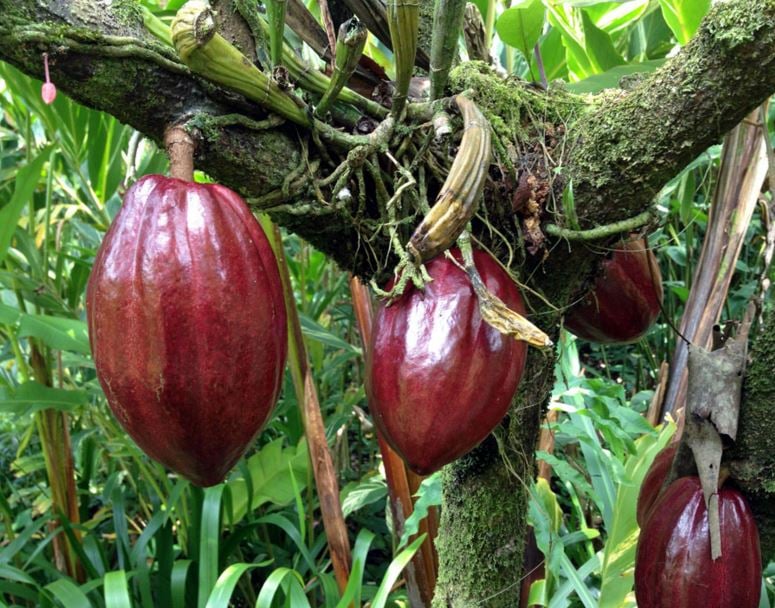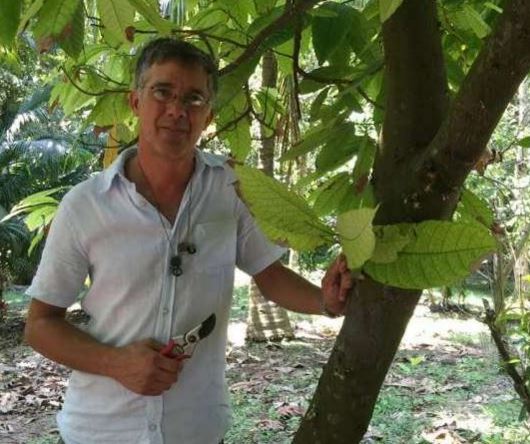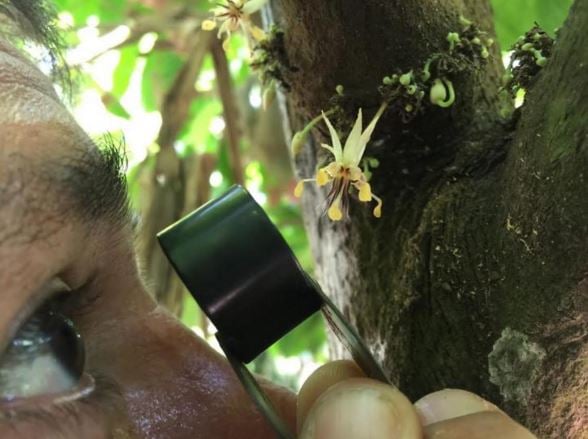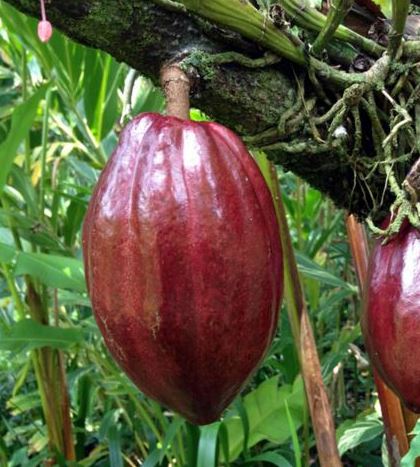Scientists have discovered that Theobroma cacao – the chocolate plant – evolved 10 million years ago, putting all previous scientific and historical statements regarding the plant from which humans get their favorite flavor on its head.
Historians have long been telling us that Theobroma cacao (which means ‘food of the gods’) dates back to about 3,100 years ago – ever since traces were discovered in Central America.
Researchers in a new study, published in the academic journal Frontiers in Ecology and Evolution, say they believe cocoa is probably far older than previously thought.
 Theobroma cacao (cacao tree or cocoa tree), is a small evergreen tree in the family Malvaceae, native to the tropical regions of Central and South America. Its seeds – cocoa beans – are used to make chocolate, cocoa powder and cocoa mass. (Image: Hawaii Tropical Botanical Garden)
Theobroma cacao (cacao tree or cocoa tree), is a small evergreen tree in the family Malvaceae, native to the tropical regions of Central and South America. Its seeds – cocoa beans – are used to make chocolate, cocoa powder and cocoa mass. (Image: Hawaii Tropical Botanical Garden)
This discovery could help address an imminent global chocolate shortage.
The scientists – from Scotland, the US and Colombia – examined pottery vessels dating back to about 1100 BC in Puerto Escondido, Honduras, and identified residue of a compound that comes only from the cocoa plant.
However, their study pushes back the cocoa timeline significantly. As the cacao tree has probably been around for millions of years longer than previously thought, the researchers believe it is likely to have close relations that will be capable of producing chocolate.
Global chocolate crisis looming
Experts warn that we are on the verge of a global chocolate supply crisis, because of instability in cacao growing regions, climate change, and rocketing demand in the emerging economies.
Current global sales of chocolate – in excess of $100 billion annually – are expected to increase dramatically over the next ten years.
 A photograph of flowers of the cacao tree, Theobroma cacao. (Image: Eurekalert. Credit: Santiago Madriñan)
A photograph of flowers of the cacao tree, Theobroma cacao. (Image: Eurekalert. Credit: Santiago Madriñan)
A report issued by Mars. Inc. and Swiss-based Barry Callebaut in 2014 informed that global cocoa consumption in 2013 was 70,000 tons greater than total production that year.
The world’s main cacao-producing regions – South America, Southeast Asia, West Africa, and the Pacific – are all vulnerable to the negative consequences of climate change, diseases, pests, as well as political instability.
The problem with cacao plants is their supposed limited genetic variation, which makes them especially vulnerable to blights and pests. Their lack of genetic variation also means they are likely to suffer more severely from climate change.
Eurekalert quoted lead author, Dr. James Richardson, a tropical botanist working at the Royal Botanic Garden Edinburgh, who said:
“Studies of the evolutionary history of economically important groups are vital to develop agricultural industries, and demonstrate the importance of conserving biodiversity to contribute towards sustainable development.”
“Here we show for the first time that the source of chocolate, Theobroma cacao, is remarkably old for an Amazonian plant species.”
 One of the study authors, Santiago Madriñan, who works at the Universidad de los Andes, Bogotá, Colombia. (Image: Eurekalert. Credit: Santiago Madriñan)
One of the study authors, Santiago Madriñan, who works at the Universidad de los Andes, Bogotá, Colombia. (Image: Eurekalert. Credit: Santiago Madriñan)
Theobroma cacao is a very old species
The research team found that Theobroma cacao, having evolved approximately 10 million years ago, is one of the oldest species in the genus Theobroma.
The cacao tree exists naturally today on both sides of the Andes mountain range. This is because the mountains were not yet fully elevated when Theobroma cacao first appeared.
If the species evolved millions of years ago, this means there are probably several genetic variations about today, with each population adapting to its unique, local habitat.
If this is the case, different genetic traits could be bred into cultivated strains, which would make them much less vulnerable to disease, pests and climate change. Who knows – we may even be able to create plants that give us new chocolate flavors.
 Photo of Santiago Madriñán examining the flowers of the cacao tree in Colombia. (Image: Eurekalert. Credit: Santiago Madriñan)
Photo of Santiago Madriñán examining the flowers of the cacao tree in Colombia. (Image: Eurekalert. Credit: Santiago Madriñan)
Dr. Richardson said:
“After 10 million years of evolution we should not be surprised to see a large amount of variation within the species, some of which might exhibit novel flavors or forms that are resistant to diseases. These varieties may contribute towards improving a developing chocolate industry.”
Dr. Richardson and colleagues say they plan to go back to South America and sample all the species related to cacao and study their genetic features.
Co-author, Santiago Madriñan, said:
“We hope to highlight the importance of conserving biodiversity so that it can be used to augment and safeguard the agricultural sector. By understanding the diversification processes of chocolate and its relatives we can contribute to the development of the industry and demonstrate that this truly is the Age of Chocolate.”
Citation: “The age of chocolate: a diversification history of Theobroma and Malvaceae,” James E. Richardson, Barbara A. Whitlock, Alan W. Meerow and Santiago Madriñán. Frontiers in Ecology and Evolution. 10 November 2015. DOI: org/10.3389/fevo.2015.00120.

